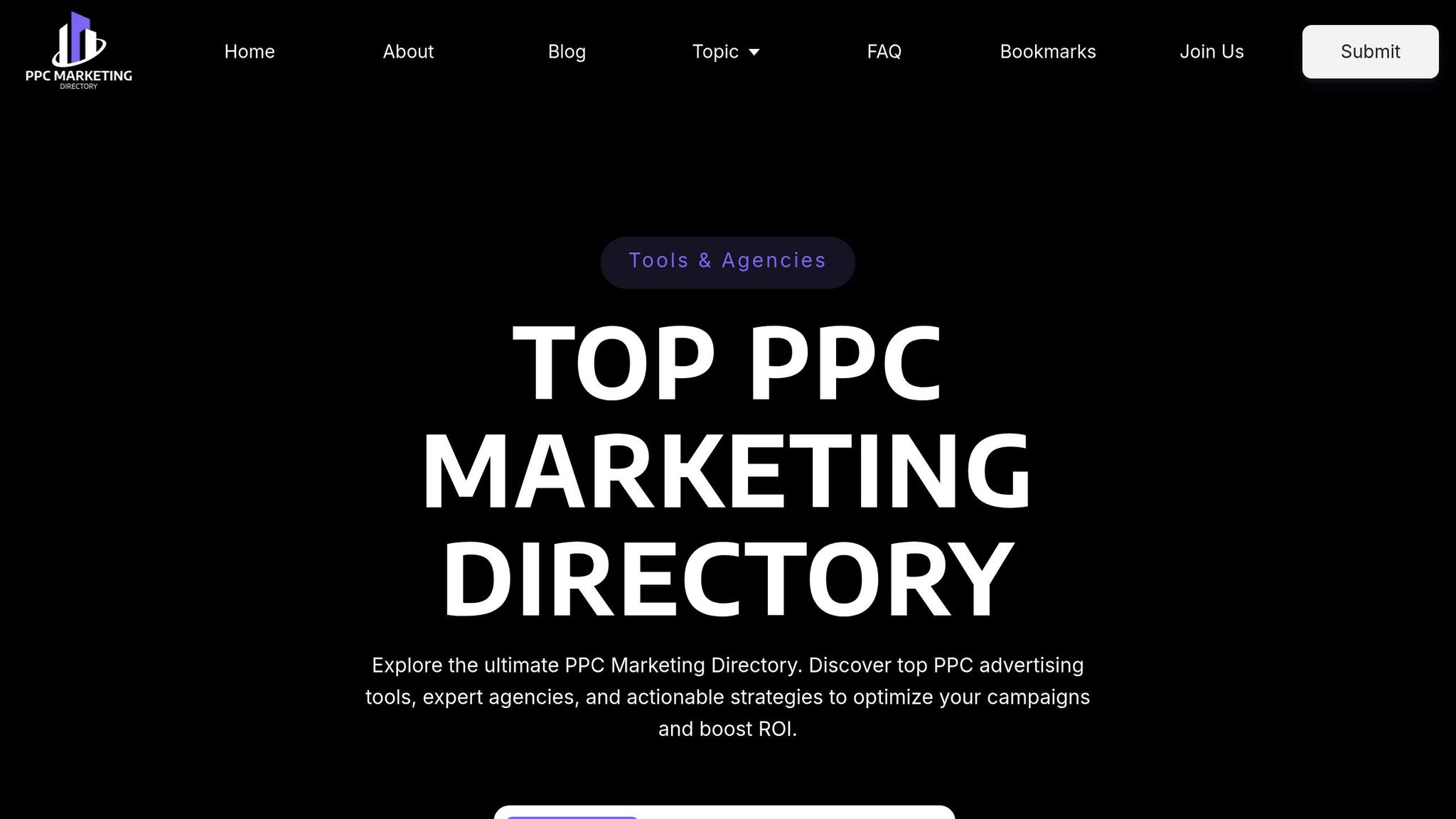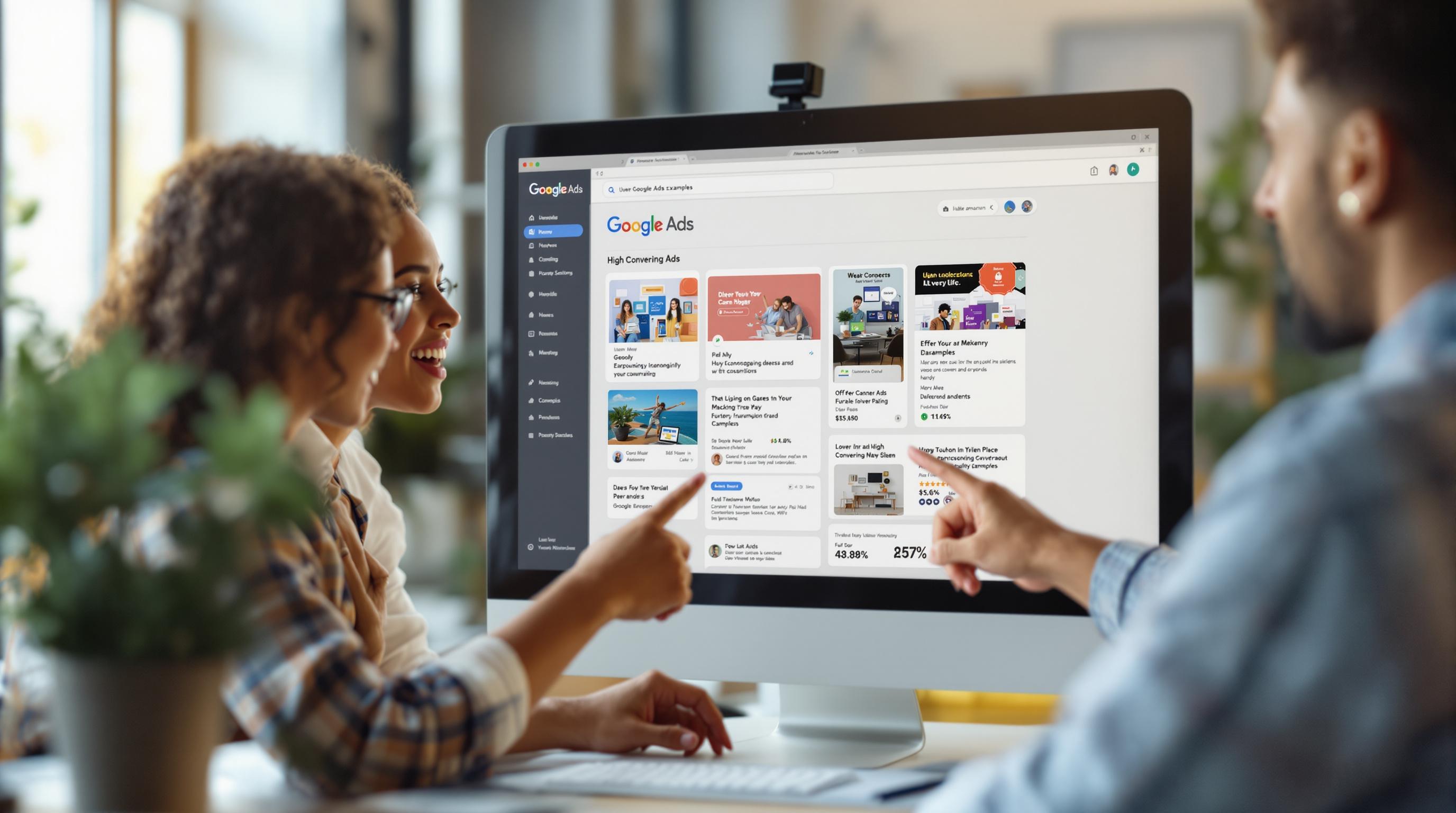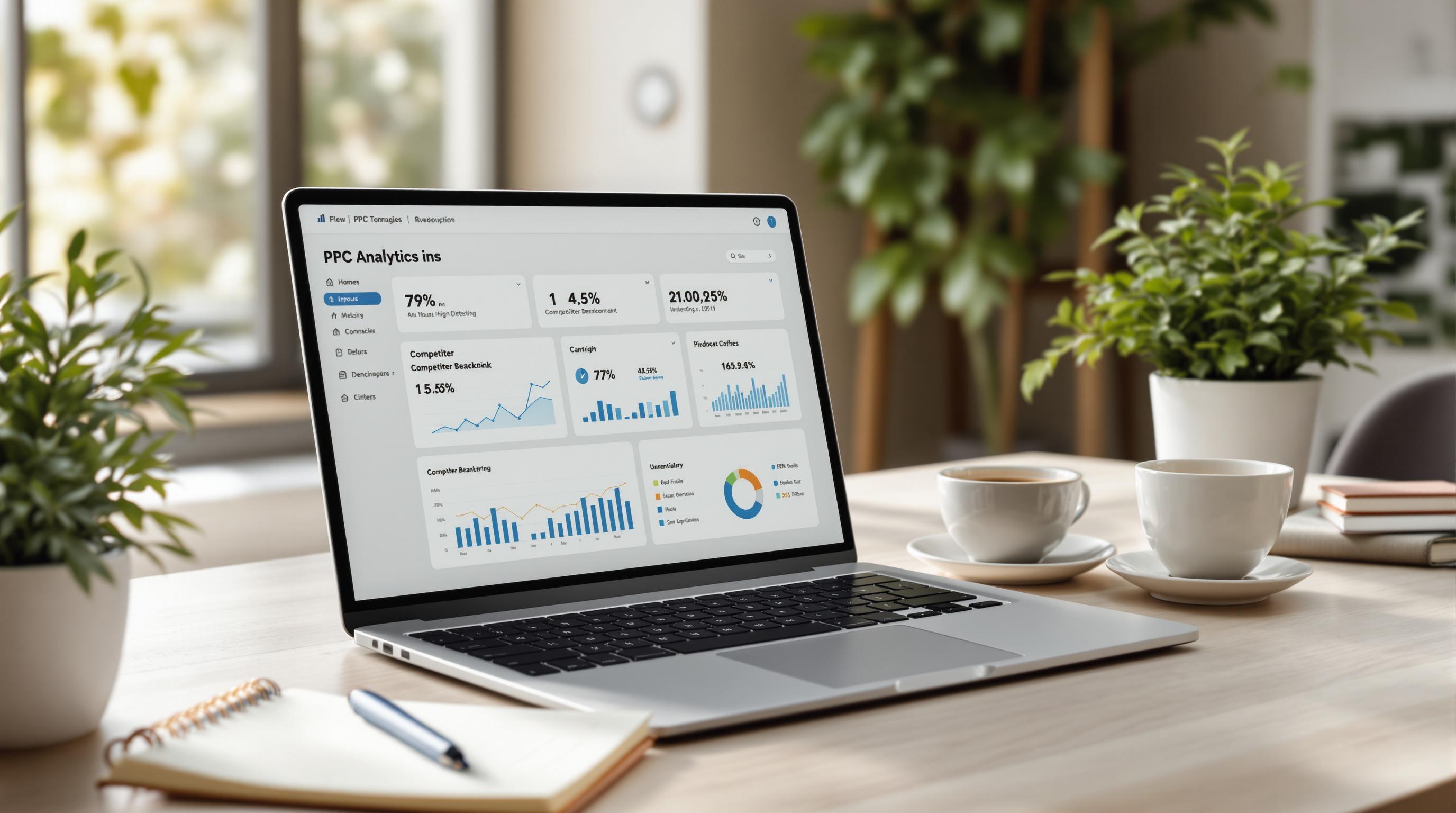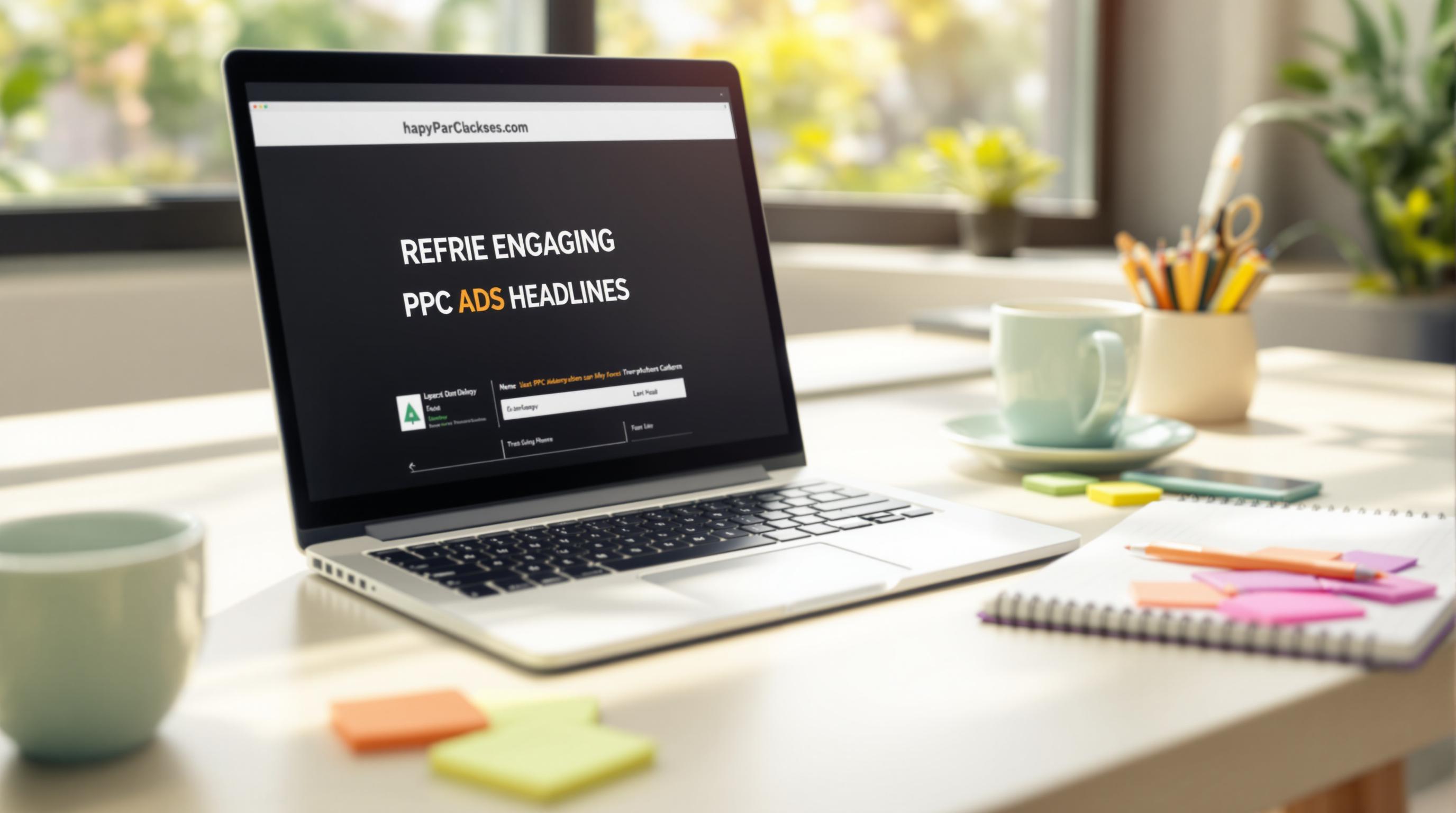Pinterest ads work best when they blend seamlessly into the platform’s visual and search-driven environment. To improve your ad placements and results, focus on three key areas:
- Choose the right ad format: Options include Promoted Pins, Video Pins, Shopping Ads, Collection Ads, and Carousel Ads. Each serves different goals, like boosting brand visibility or driving sales.
- Target strategically: Use interest, keyword, demographic, and retargeting options. Pinterest’s tools, like Actalike audiences and the Pinterest Tag, help you reach people primed to engage with your content.
- Test and optimize: Run A/B tests to refine placements, creatives, and budgets. Monitor metrics like CTR, CPC, and conversions to identify what works and scale successful strategies.
Pinterest users often plan purchases months ahead, making it crucial to align ads with seasonal trends and decision-making moments. Use these steps to position your ads effectively and maximize ROI.
Promoted Pins on Pinterest: How to Setup & Optimize Your Conversion Campaigns
Pinterest Ad Placement Types
Understanding Pinterest's ad formats is key to creating a solid placement strategy. Each format is tailored to meet specific marketing goals and appears in distinct areas of the platform.
Available Ad Formats
- Promoted Pins: These look like regular pins but are boosted through paid promotion. They show up in home feeds, search results, and related pins sections. Their seamless integration with organic content makes them great for driving website traffic and increasing brand visibility.
- Video Pins: These autoplay videos grab attention with motion, making them ideal for showcasing product demos or tutorials. Whether it’s a fashion lookbook or a cooking guide, this format is perfect for engaging audiences visually.
- Shopping Ads: These ads are linked directly to your product catalog, complete with live pricing. They simplify the buying process, making them a go-to for e-commerce brands focused on direct sales. You’ll find them in search results, shopping spotlights, and dedicated shopping tabs.
- Collection Ads: This format combines a hero image or video with smaller product images, creating an immersive shopping experience. Often appearing in feeds and search results, they’re great for industries like home decor to showcase complete setups with shoppable items.
- Carousel Ads: Display multiple images or videos in a single ad, with each frame linking to a unique landing page. This format works well for highlighting product variations, telling a brand story, or showcasing multiple services in one ad.
Choose the format that aligns with your campaign’s goals and resonates with your target audience.
Campaign Goals and Placement Selection
Once you’ve identified the right ad formats, focus on placements that align with your objectives:
- Brand Awareness Campaigns: Promoted Pins and Video Pins are ideal for maximizing reach. Their prominent placement in home feeds and popular search results ensures high visibility.
- Conversion-Focused Campaigns: Shopping Ads and Collection Ads excel at streamlining purchases by showing pricing and availability directly in search results, making them perfect for driving sales.
- Consideration Campaigns: Video Pins and Carousel Ads are great for providing detailed product information. They encourage users to spend more time engaging with your content and exploring their options.
- Catalog Sales Campaigns: Shopping Ads are highly effective for promoting products from your inventory. They align with user search behavior and seasonal trends, ensuring relevance.
- Evergreen Campaigns: For consistent presence over time, use a mix of formats across different placements. Adjust bids and budgets based on performance data to find the best balance for your audience and industry.
Targeting and Audience Setup
To make sure your Pinterest ads reach the right people, you’ll need a well-thought-out audience targeting strategy. Pinterest provides several targeting options designed to connect you with users who are most likely to interact with your content and take action.
Basic Targeting Methods
Pinterest’s core targeting tools offer plenty of flexibility. Here’s a breakdown:
- Interest targeting: Choose from a wide range of interest categories - like home decor, wedding planning, or fitness - to target users based on their activity on Pinterest.
- Keyword targeting: Since Pinterest functions as a visual search engine, keyword targeting is especially powerful. Users actively search for terms, so you can target broad keywords like "kitchen renovation" or drill down with long-tail phrases like "small apartment kitchen storage ideas."
- Actalike audiences: These are Pinterest’s version of lookalike audiences. You can create them based on website visitors, email subscribers, or users who’ve interacted with your Pinterest content. Because they mimic your best customers, they often deliver strong results.
- Demographics targeting: Narrow down your audience by age, gender, location, language, and device type. While Pinterest’s user base is about 60% female, male engagement is growing in areas like technology, finance, and fitness. Location targeting is especially useful for businesses with regional products or services.
- Retargeting: Re-engage people who’ve already interacted with your brand. Whether it’s website visitors, Pinterest engagers, or email subscribers, retargeting often leads to higher conversion rates since you’re reaching people who are already familiar with your business.
These targeting methods form the foundation of your audience strategy, but Pinterest offers even more advanced options for precise targeting.
Custom Audience Creation
For deeper audience segmentation, custom audiences let you use your own customer data. Here’s how it works:
- Customer lists: Upload email addresses, phone numbers, or mobile advertising IDs from your CRM. Pinterest matches this data to user accounts on the platform. Hashed email addresses tend to produce the best match rates.
- Pinterest Tag: Add this snippet of code to your website to track visitor behavior and create audiences based on specific actions. For instance, you can target users who viewed a product, added something to their cart, or completed a purchase. Over time, these audiences grow more effective as more data is collected.
- Engagement audiences: Focus on Pinterest users who’ve already interacted with your content - whether they’ve saved your pins, clicked on your ads, or visited your profile. These audiences are often highly responsive since they’ve already shown interest in your brand.
By leveraging these custom audience tools, you can create campaigns tailored to specific behaviors and actions.
Automated Targeting Features
Pinterest also offers automated tools to refine and expand your targeting efforts. These features can complement your manual strategies:
- Expanded targeting: This feature allows Pinterest to go beyond your set parameters and show ads to users who are likely to convert, based on algorithm predictions. It works best when you’ve accumulated at least 50 conversions for the algorithm to analyze.
- Smart targeting: This combines multiple targeting methods automatically. Pinterest evaluates your campaign goals, ad creatives, and performance data to find the best targeting mix. It’s a great option if you want to test different strategies without creating multiple ad sets manually.
- Demographic filters and negative keywords: Even with automated tools, you retain control. Demographic filters ensure your audience meets basic criteria like age or location, while negative keywords prevent your ads from appearing in irrelevant searches.
For automated targeting to work effectively, conversion tracking is key. Whether your goal is purchases, signups, or app installs, Pinterest needs clear data to optimize your campaign.
Additionally, insights from automated campaigns can guide your manual strategies. For example, you can analyze which interests, demographics, or keywords performed well and use that information to refine future campaigns. This creates a helpful feedback loop between automated and manual efforts.
Ad Placement Configuration
Once you've nailed down your audience, the next step is setting up your ad placements to get the best results. Pinterest gives you a few options for managing placements, each tailored to different goals and levels of expertise. Here's how to make the most of them.
Manual vs. Automatic Placement Settings
Pinterest offers two main modes for campaign setup, and the choice between them depends on how much control you want over your ad placements and targeting.
Automated campaigns are designed to simplify the process. All you need to do is define your campaign goal, set age or location parameters, decide on a daily budget, and pick the Pins you want to promote. From there, Pinterest's algorithms take over, using tools like Performance+ bidding to optimize your campaign. While this hands-off approach is convenient, it defaults to broad settings, such as targeting all genders and devices, which might not align perfectly with your specific audience needs.
Manual campaigns, on the other hand, put you in the driver’s seat. You can fine-tune everything - from manual bids to advanced targeting options - allowing you to focus on specific objectives like brand awareness, video views, conversions, or catalog sales. With manual campaigns, you can also decide exactly where your ads appear, whether that’s in search results or feed discovery.
Budget and Bidding Setup
Your budget and bidding choices play a huge role in how far your ads go. Pinterest lets you set daily budgets for consistent delivery or lifetime budgets for a more optimized overall performance.
When it comes to bidding, you’ve got two main options: manual or automated. Manual bidding gives you complete control over how much you’re willing to spend on each action, which is ideal if you have specific cost goals. On the flip side, Performance+ bidding, powered by Pinterest’s AI, adjusts bids automatically based on live auction data and user behavior. This strategy works best if you’ve got plenty of conversion data for the algorithm to analyze. Deciding between the two often comes down to how much historical performance data you have and your campaign’s level of maturity.
Once you’ve set your budget and bids, it’s time to test and refine your placements.
Testing and Scaling Methods
Configuring ad placements isn’t a one-and-done task - it’s an ongoing process of testing and scaling. Start by running A/B tests to compare different placement setups. Keep everything else constant - like your audience targeting, creative assets, and budget - so you can isolate the impact of placement changes. Run these tests for at least a week to account for daily fluctuations and gather meaningful data.
When you find a winning placement, scale it gradually to reduce risks. For instance, increase budgets for high-performing placements by 20–30% every few days while keeping an eye on performance metrics. You can also test geographic scaling by expanding successful configurations to similar regions. Another tactic is creative scaling - try introducing video Pins or carousel formats alongside your standard Pins to broaden your strategy. Regularly review your metrics to ensure your approach stays effective and make adjustments as needed.
sbb-itb-89b8f36
Performance Monitoring and Adjustments
Once your placements are live, it’s time to keep a close eye on their performance and make data-driven tweaks. Pinterest offers plenty of insights to help you figure out what’s working and what might need a little fine-tuning. The trick is to zero in on the metrics that directly influence your campaign’s success.
Important Performance Metrics
- Impressions: This tells you how often your ad is displayed. While impressions help gauge reach, they need context. If you’re seeing high impressions but low engagement, it could mean your targeting is too broad or your creative isn’t resonating with your audience.
- Pin clicks and click-through rate (CTR): These metrics reveal how appealing your ad is. A healthy CTR typically falls between 0.5% and 1.5%, signaling that your visuals and copy are hitting the mark.
- Cost per click (CPC): CPC measures how much you’re spending to generate interest. Keeping an eye on this is crucial for managing your budget and ensuring a good return on investment. If your CPC climbs without a matching increase in conversions, it’s time to dig deeper.
- Conversion rate: This metric tracks whether users are completing your desired action - like making a purchase or signing up - after clicking your ad. A high CTR doesn’t mean much if conversions are lagging behind.
- Return on ad spend (ROAS): ROAS highlights the financial return from your ad spend, making it a key metric for e-commerce campaigns.
- Engagement rate: This measures user interactions such as saves, close-ups, outbound clicks, and swipes. Strong engagement often signals a well-performing campaign.
- Video metrics: For video campaigns, track video views, view time, and completion rates. These metrics can guide adjustments to your video’s length or structure, ensuring it keeps users engaged.
Additionally, monitor landing page metrics like bounce rate, time on page, and page load speed to confirm that users are having a smooth post-click experience.
These metrics are your compass for optimizing your campaign and driving better results.
Finding Poor-Performing Placements
Metrics can also help you spot underperforming placements. For example, if you notice a high CPC but low conversions, it may indicate wasted ad spend. Similarly, if save and click rates fall below your account averages, it’s a good idea to refresh your creative or adjust your targeting.
Pay close attention to outbound clicks and outbound click rate, which measure how effectively your ads drive users to your destination URL. If these numbers are low, it’s worth revisiting your ad’s messaging or visuals to boost engagement.
Ongoing Improvement Process
Using insights from your performance data and underperforming placements, adopt a continuous optimization strategy. Regularly test and tweak elements like creative formats, targeting settings, and bidding strategies. Running tests for at least seven days can help account for weekly patterns in user behavior, giving you a clearer picture of what’s driving results. Keep refining to ensure your campaign stays on track.
Using Top PPC Marketing Directory for Pinterest Ads

When it comes to running effective Pinterest ad campaigns, the right tools and expert guidance can make all the difference. The Top PPC Marketing Directory is a valuable resource for businesses aiming to improve their Pinterest advertising strategies. It provides a curated collection of trusted PPC tools and services, helping marketers cut through the clutter and focus on solutions that work.
This directory solves a common problem: finding reliable tools and partners in the overwhelming sea of PPC options. By using this resource, you can simplify your Pinterest ad management process and save time that would otherwise be spent on endless research.
Directory Features and Tools
The directory offers a range of tools designed to support successful Pinterest ad campaigns. For example:
- Campaign management tools: Manage multiple Pinterest campaigns from one dashboard, making it easier to test and scale your efforts efficiently.
- Bid management solutions: Adjust bids based on performance data to maintain competitive cost-per-click rates.
- Performance tracking tools: Access advanced analytics to measure your ads' effectiveness and impact.
- A/B testing platforms: Experiment with different creative formats and targeting options to identify what resonates most with your audience.
By incorporating these tools into your strategy, you can streamline your campaign optimization and improve ad performance across the board.
Finding Pinterest Ad Specialists
The directory also connects you with agencies that specialize in Pinterest's visually-driven advertising environment. These experts understand the platform's unique features and can craft strategies tailored to how users interact with content. For example, agencies experienced in formats like Shopping or Video ads can help you maximize your ad placements and engagement.
Many of the listed agencies offer retargeting services tailored for Pinterest, turning user interactions into effective remarketing funnels. Additionally, the directory highlights agencies with strong track records through its featured and premium listings, making it easier to find partners suited for larger budgets or specialized needs.
Another critical service included is landing page optimization. With many Pinterest users browsing in a discovery mindset, having optimized landing pages is key to converting traffic into meaningful actions.
Conclusion: Pinterest Ad Placement Best Practices
Fine-tuning your Pinterest ad placements is all about smart targeting, ongoing adjustments, and using the right tools. These steps build on the strategies discussed earlier, helping you craft campaigns that truly resonate with Pinterest's unique audience. The best-performing campaigns use a mix of keywords, interests, and behavioral insights tailored specifically to this platform.
A key ingredient for success is effective audience segmentation. By tailoring messages for different user groups and tapping into Pinterest's blend of search and social features, brands can see significant results. For example, one campaign saw a 35% higher click-through rate by using high-quality visuals targeted at specific audiences. Another boosted website traffic by 50% with focused DIY content, while shifting from CPC to CPM increased ad impressions by 60% and sales by 15%.
Keeping your placements optimized is just as important. Regularly tracking metrics like click-through rates, conversion rates, and cost per click helps you spot what’s working and cut out what’s not. Testing different combinations of images, headlines, and descriptions can uncover what resonates most with your audience, offering valuable insights to enhance future campaigns.
Don’t overlook the power of seasonal trends. Pinterest users are planners, often searching for ideas months in advance of holidays or events. Aligning your ads with these trends and decision-making moments can give you a competitive edge.
Finally, tapping into resources like the Top PPC Marketing Directory can connect you with experts and tools to streamline your efforts. These resources help translate strategy into actionable results, making your campaigns more effective and efficient.
Success on Pinterest comes down to a cycle of testing, analyzing, and refining. By combining sharp audience targeting with consistent performance tracking and expert insights, businesses can turn Pinterest advertising into a powerful engine for growth and customer acquisition.
FAQs
What’s the best Pinterest ad format for my campaign goals?
The best Pinterest ad format hinges on what you want to achieve. If your focus is on brand awareness or engagement, image or video ads are great options. They let you showcase your products visually or share a captivating story. On the other hand, if your goal is to drive traffic or increase conversions, formats like shoppable Idea Ads or AR Try On ads are ideal. These are designed to appeal to users who are ready to make a purchase.
Matching your ad format to your campaign goals - whether it’s visibility, interaction, or sales - can help you make the most of your efforts and connect with the right audience.
What are the best ways to optimize Pinterest ad targeting to reach your ideal audience?
To get the most out of Pinterest ad targeting, start by leveraging demographic filters such as age, gender, location, language, and device type. These filters allow you to zero in on the specific audience most likely to engage with your content. Then, layer in interest-based targeting and keywords to align your ads with what users are searching for or interested in. This combination helps create campaigns that feel tailor-made for your audience, boosting relevance and connection.
Don’t forget to keep an eye on your campaign data. Regularly analyzing performance trends can help you fine-tune your targeting strategy. By making adjustments based on what’s working, you’ll ensure your ads consistently reach the right people, driving better engagement and a stronger return on investment.
How can I use Pinterest's automated tools to improve ad placements while keeping control over targeting?
Pinterest provides automated tools like expanded targeting and algorithm-driven audience selection to enhance your ad placements, making them more relevant and far-reaching. However, to keep control over critical targeting aspects, it's smart to pair these automation features with manual adjustments. For instance, you can set up key audience segments or define specific demographics, using automation as a helpful add-on rather than fully depending on it.
This mix of automation and manual input lets you take advantage of Pinterest's technology without straying from your campaign objectives. By striking this balance, you can fine-tune your ads for both efficiency and accuracy, ensuring your strategy aligns with your goals.


